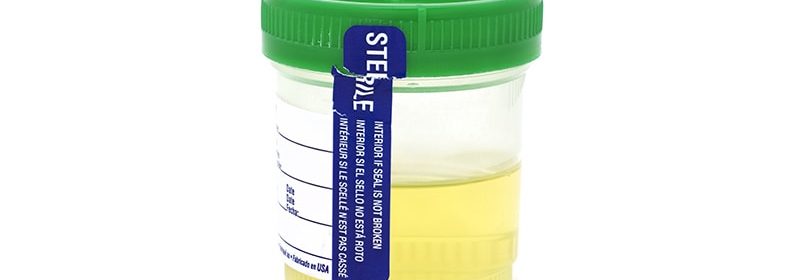Screening Finds Albuminuria in 3% of Community Adults

Roughly 3% of adults in the general population of The Netherlands have microalbuminuria or macroalbuminuria, and in nearly two thirds of this subgroup — roughly 2% of the general population — kidney disease had previously gone unidentified, based on screening results in a study of about 15,000 adults.
“This is the first study to prospectively investigate population screening for albuminuria,” said lead investigator Ronald T. Gansevoort, MD, at the European Renal Association Congress in Paris in May.
The findings also showed that screening via mailed-in urine specimens met current thresholds for cost effectiveness, with a calculated cost of €10 (about $10.70) per invited individual, €635 per positive result, and €13,279 per quality-adjusted life-year (QALY) achieved, reported Gansevoort, a nephrologist and professor of medicine at University Medical Center Groningen, The Netherlands.
The results also showed that screening uptake via a mailed urine specimen was 59.7%, a participation level Gansevoort characterized as “good.” He also expressed optimism about the potential to substantially raise this uptake rate by combining collection of urine specimens for albuminuria screening with screening visits made by adults for colorectal cancer assessment.
Piggyback Urine Screening on Colorectal Cancer Screening
Screening for colorectal cancer is now undertaken by about 85% of the targeted adult population in The Netherlands, and if albuminuria screening could piggyback on that effort, and thereby raise uptake to about the same 85% rate, it “would be a huge benefit,” Gansevoort said during a press conference at the Congress.
However, he cautioned that the next step in developing widespread albuminuria screening was a larger-scale study he is about to start to assess the uptake and efficacy of screening in five other European countries as well as once again in The Netherlands.
The Towards Home-Based Albuminuria Screening (THOMAS) trial prospectively compared the uptake and performance of two different screening methods in a total of 15,072 unselected adults who were 45 to 80 years old from the general population residing in Breda, The Netherlands, during a roughly 2-year period starting in late 2019. About half the invited participants received a standard urine collection tube that they sent to a central laboratory, while the others performed a self-test using a urine dipstick with the result submitted via a mobile phone app.
Mailed Urine Specimens Outperform an App
While uptake of the conventional mailed-specimen method approached 60%, uptake of the app-based self-test was substantially lower, at 44% overall, and even lower — 41% — among people aged 65 or older, and also lower among people in low socioeconomic-level households, where the uptake rate was 38%.
The confirmed rate of microalbuminuria or macroalbuminuria, based on a confirmed minimum albumin-to-creatinine ratio (ACR) of at least 3 mg/mmol (30 mg/g), was 3.3% among those screened using mailed-in specimens. About a quarter of the confirmed positives had macroalbuminuria, with an ACR greater than 30 mg/mmol (300 mg/g). Average ACR among all the identified positives was 10.8 mg/mmol (108 mg/g).
The confirmed positive rate was even higher, 5.1%, among those who self-tested with a dipstick and reported via the app, but this approach also produced many false positives and a specificity of 67.9%, another reason why Gansevoort concluded that the app-based option was not viable in its tested configuration. (But he hinted that future tweaks to this approach could potentially boost sensitivity.)
Gansevoort also reported that 62% of the people with albuminuria identified by the mailed-specimen approach had previously unsuspected albuminuria, or about 2% of the general adult population. Further assessment of the people identified with albuminuria using mailed-in specimens showed that 35% had previously unidentified hypertension, 25% had previously unidentified dyslipidemia, and 2% had previously unidentified diabetes.
Time for a US Update?
The most recent assessment of albuminuria screening of the general adult US population for the purpose of identifying occult chronic kidney disease (CKD), released by the US Preventive Services Task Force in 2012, recommended against widespread, routine screening. The Task Force cited “insufficient evidence” for benefit resulting from the identification and early treatment of CKD in asymptomatic adults who do not have hypertension, diabetes, or cardiovascular disease as a major factor in its decision.
However, a recent news report cited Carol M. Mangione, MD, chair of the US Preventive Services Task Force, as stating that the Task Force is actively considering issuing an updated recommendation, driven in part by the availability of interventions, such as treatment with a sodium-glucose cotransporter 2 (SGLT2) inhibitor, that have now been proven to preserve renal function in patients with CKD but without other comorbidities such as diabetes or hypertension.
The THOMAS study received no commercial funding. Gansevoort has reported serving as a consultant for or receiving research funding from AbbVie, AstraZeneca, Baxter, Bayer, Galapagos, Happitech, Healthy.io, Ipsen, Mironid, Otsuka, Roche, Sanofi-Genzyme, and Sandoz. All money involved went to Gansevoort’s institution: University Medical Center Groningen, The Netherlands.
ERA Congress 2022. Presented May 20, 2022. Late Breaking Abstract
Mitchel L. Zoler is a reporter for Medscape and MDedge based in the Philadelphia area. @mitchelzoler
Follow Medscape on Facebook, Twitter, Instagram, and YouTube.
Source: Read Full Article